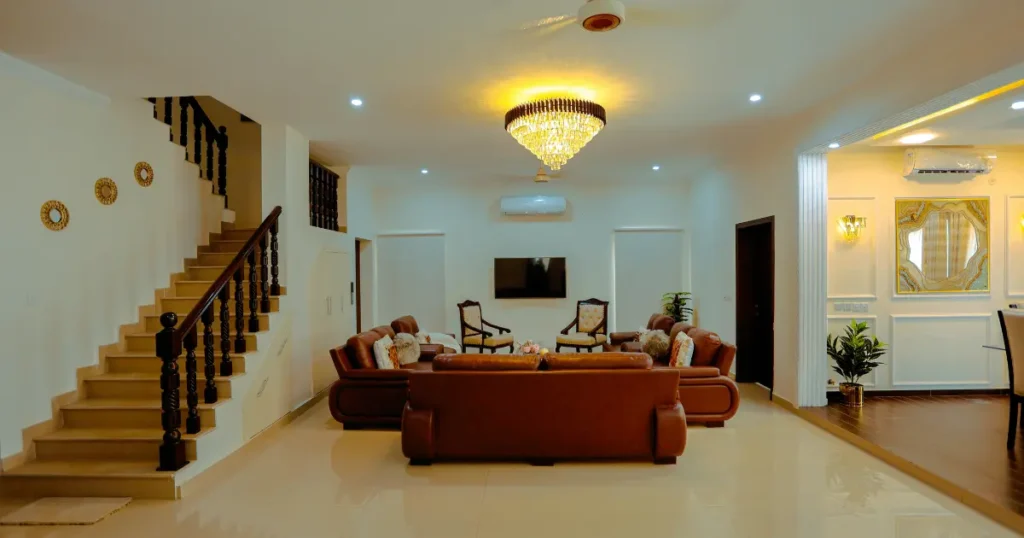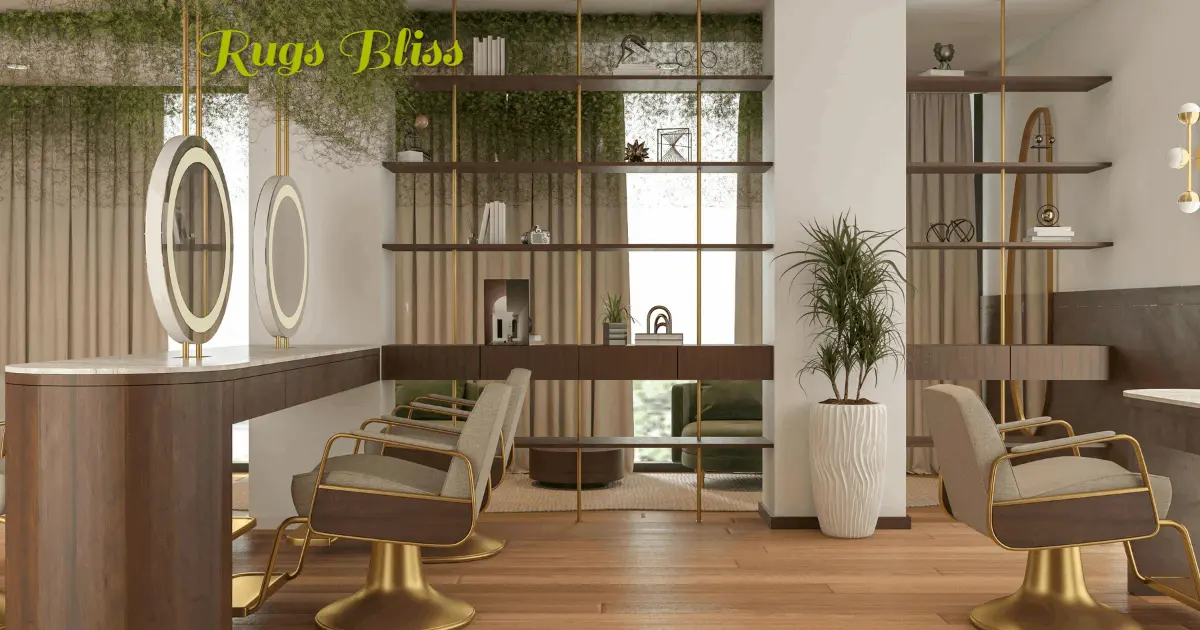Tufting a rug is an exciting and hands-on way to bring your creativity to life and add a personal touch to your home decor. Whether you’re dreaming of vibrant patterns or cozy textures, getting started with tufting a rug is easier than you think.
With a few key tools and techniques, you can craft a one-of-a-kind rug that reflects your unique style. In this guide, we’ll show you how to dive into the world of tufting, step-by-step, so you can turn your design vision into a reality.
Types of Tufting

- Cut Pile Tufting: Involves cutting the loops of yarn to create a soft, plush surface.
- Loop Pile Tufting: Keeps the yarn loops intact, resulting in a textured, durable finish.
- Combination Pile: A mix of cut and loop pile, offering varied texture and design possibilities.
How to Get Started Tufting a Rug
Tufting a rug is an exciting and creative way to design custom rugs from scratch. To get started, you’ll need a tufting gun, yarn, fabric, and a sturdy frame to stretch the fabric over. Begin by sketching your desired design on the fabric, then use the tufting gun to push the yarn through, following the pattern. With practice and the right materials, tufting a rug becomes a fun and rewarding DIY project that allows for endless design possibilities.
Benefits of Tufting a Rugs
Tufting rugs offers a wide range of benefits, making it an appealing option for both hobbyists and professionals. Below is a detailed overview of the key advantages:
| Benefit | Description |
|---|---|
| Customization | Create unique designs tailored to your personal style, with control over colors, patterns, and textures. |
| Creative Expression | A platform for artistic freedom, allowing experimentation with different techniques and materials. |
| Cost-Effective | More affordable than buying custom rugs, with the option to reuse materials from other projects. |
| Quality Control | Complete control over the choice of materials and attention to detail during the rug-making process. |
| Durability | Tufted rugs are long-lasting and can withstand heavy use, with proper care ensuring longevity. |
| Eco-Friendly | By selecting sustainable materials, you can create environmentally friendly rugs. |
| Skill Development | Learning tufting adds a valuable skill to your crafting abilities and boosts confidence. |
| Home Aesthetic | Adds warmth, texture, and a unique touch to your living space, serving as a focal point in any room. |
Customization
- Personalized Designs: Tufting allows you to craft a rug that perfectly matches your decor. You can select the colors, patterns, and textures that best reflect your personal taste.
- Versatility: Whether you’re aiming for a contemporary look or a more traditional design, tufting offers the flexibility to create exactly what you envision.
Creative Expression

- Artistic Freedom: Tufting gives you the opportunity to express your creativity in a tangible form. You can experiment with different yarn types, colors, and pile heights.
- Therapeutic Process: Many find the process of tufting to be calming, offering a satisfying way to unwind while producing something beautiful.
Cost-Effective
- Budget-Friendly: Creating your own tufted rug is often more economical than purchasing a custom-made one. You can also save by using leftover materials from other projects.
- Reuse and Recycle: Tufting allows for the repurposing of yarn and other materials, reducing waste and cutting costs.
Quality Control
- Material Choice: When you tuft your own rug, you can ensure the use of high-quality materials that meet your specific standards.
- Attention to Detail: As the maker, you have the opportunity to focus on every aspect of the rug, ensuring a finished product that is exactly what you want.
Durability
- Long-Lasting: Hand-tufted rugs are known for their durability. With the right materials and care, they can last for many years.
- Easy Maintenance: These rugs are relatively easy to care for, requiring only regular vacuuming and spot cleaning to maintain their appearance.
Eco-Friendly
- Sustainable Materials: By choosing natural or recycled yarns and backings, you can reduce your environmental impact.
- Handcrafted Appeal: Creating a rug by hand reduces reliance on mass-produced products, supporting a more sustainable and ethical approach to home decor.
Skill Development
- Learning a New Craft: Tufting is a valuable skill that can be applied to a variety of projects. Learning this craft enhances your abilities and opens up new creative possibilities.
- Building Confidence: As you become more proficient in tufting, your confidence will grow, allowing you to tackle more complex designs.
Home Aesthetic Enhancement
- Adds Texture and Warmth: A tufted rug adds a cozy and inviting feel to any room. Its texture can enhance the overall aesthetic of your home.
- Statement Pieces: Custom tufted rugs can serve as striking focal points in a room, tying together other elements of your decor.
Easy Tufting Design
Tufting a rug can be made easier with simple, beginner-friendly designs. By choosing basic patterns like geometric shapes or minimalistic motifs, you can create a stylish and modern look without complicated techniques. Easy tufting designs often focus on straight lines or simple curves, allowing you to quickly finish your project while mastering the tufting process. This approach ensures that even beginners can enjoy the art of tufting a rug with great results.
Tools and Materials Needed for Tufting a Rug

Before you start tufting, you’ll need to gather the necessary tools and materials. The right equipment is essential for creating a high-quality rug.
Essential Tools
| Tool | Description |
|---|---|
| Tufting Gun | A machine that shoots yarn through the fabric, speeding up the tufting process. |
| Punch Needle | A manual tool for creating smaller, more detailed rugs. |
| Fabric Frame | A wooden or metal frame that holds the fabric taut while you work. |
| Shears | Used for trimming excess yarn and shaping the rug. |
| Yarn | The primary material used for tufting; choose a durable and colorfast yarn. |
| Primary Backing | The fabric base onto which the yarn is tufted; often made of monk’s cloth. |
| Adhesive | A glue or latex material to secure the yarn to the backing. |
| Secondary Backing | A fabric applied to the back of the rug to provide stability and durability. |
Optional Tools
- Projector: Useful for projecting designs onto the fabric backing.
- Carpet Cutter: A tool for precisely cutting out the rug shape.
- Nylon Thread: For extra reinforcement of the rug edges.
How to Start Making Rug
To start making a rug, first gather essential materials like a backing fabric, yarn, and a tufting tool or punch needle. Stretch the fabric securely on a frame or workspace to ensure a smooth surface. Next, sketch your design directly on the fabric or use a stencil. Begin tufting by pushing the yarn through the fabric to create your desired pattern. With patience and creativity, you’ll soon have a unique rug to enjoy.
Benefits of Buying Custom Rugs
Buying a custom rug, especially when tufting a rug, offers several benefits. It allows you to create a design that perfectly matches your space, reflecting your personal style and preferences. Custom tufted rugs are also tailored to fit any room size or layout, ensuring a perfect fit. Additionally, they are often crafted with high-quality materials, making them durable and unique. Overall, tufting a rug provides the opportunity to own a one-of-a-kind piece that enhances the aesthetic and comfort of your home.
Step-by-Step Guide to Starting Your Tufting a Rug Project

Starting your first rug tufting project can be an exciting yet daunting task. Follow these steps to ensure a smooth process from start to finish.
Preparing Your Workspace
Set up a dedicated workspace with ample room for your fabric frame. Ensure good lighting and ventilation, as tufting can create dust and fibers.
Safety Precautions
- Wear a dust mask to avoid inhaling fibers.
- Keep sharp tools like shears and carpet cutters safely stored when not in use.
Selecting Your Design
Choose a design that reflects your personal style. Beginners may want to start with simple patterns and gradually move to more intricate designs.
Setting Up the Fabric Frame
Secure the primary backing fabric onto the frame. Ensure it’s tightly stretched to avoid sagging during tufting.
Loading the Tufting Gun
Load the yarn into the tufting gun according to the manufacturer’s instructions. Practice on a scrap piece of fabric before starting on your actual rug.
Tufting the Rug
Begin tufting by following your design outline. Work systematically, either from top to bottom or side to side, to ensure even coverage.
Troubleshooting Common Issues

| Yarn Breakage | Check for tension issues or switch to a more durable yarn |
| Uneven Tufts | Ensure the fabric is tightly secured and that the tufting gun is held at the correct angle |
Securing the Tufts
Once the tufting is complete, apply adhesive to the back of the rug to secure the yarn in place. Allow it to dry completely before moving on.
Trimming and Shaping
Use shears to trim excess yarn and shape the rug. Pay attention to the edges to create a clean finish.
Applying the Secondary Backing
Attach the secondary backing fabric using adhesive. This step adds stability and durability to the rug.
Finishing Touches
Inspect the rug for any loose threads or uneven sections. Make final adjustments to ensure a professional finish.
Conclusion
Tufting a rug is a creative and fulfilling craft that allows you to bring your artistic visions to life. With the right tools, materials, and techniques, you can create beautiful, custom rugs that enhance your living space. Whether you’re just starting or looking to refine your skills, this guide provides the essential knowledge to get you started on your tufting journey. Remember, practice makes perfect, and with each rug you create, you’ll gain confidence and expertise in this rewarding art form. Happy tufting!
FAQs
What is the Difference Between Tufting and Weaving?
Tufting involves pushing yarn through a backing fabric, while weaving interlaces yarns to create a fabric. Tufting is faster and allows for more varied textures and designs.
Can I Use Any Fabric for the Backing?
No, not all fabrics are suitable for backing. The primary backing should be a strong, durable fabric like monk’s cloth or burlap to withstand the tufting process.
Is Rug Tufting Suitable for Beginners?
Yes, rug tufting can be suitable for beginners, especially with the use of a tufting gun. Start with simple designs and practice on scrap fabric to build your skills.
Can I Create Different Textures with Tufting?
Yes, by using different pile heights and yarn types, you can create a variety of textures within your tufted rug, adding depth and visual interest.
How Do I Maintain My Tufting Gun?
To maintain your tufting gun, regularly clean it to remove any yarn fibers and ensure it is properly lubricated. Store it in a dry place to prevent rust and damage.
